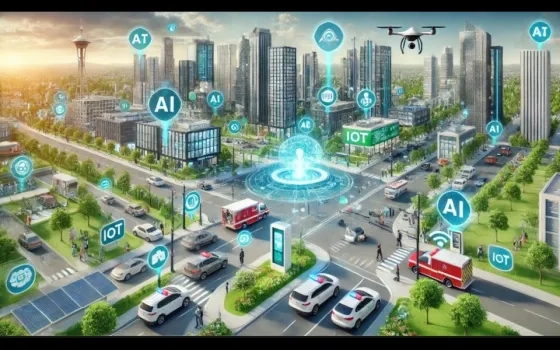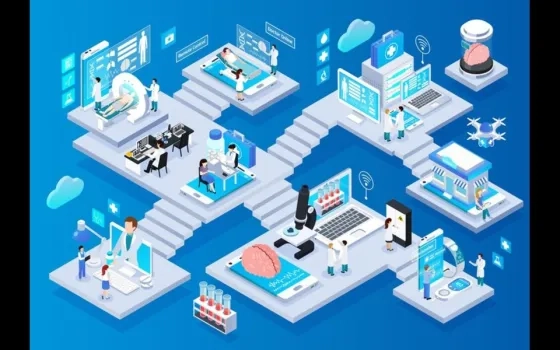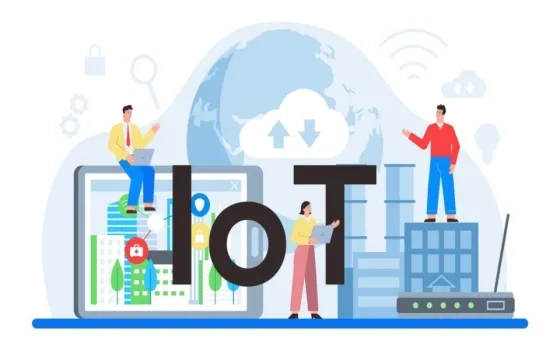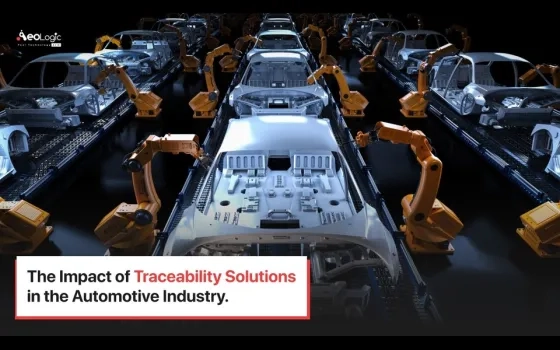
Welcome to 2017, the year when IIoT goes mainstream! The pieces have been falling into place for some time now, a trend that accelerated in the last half of 2016 and will certainly characterize 2017. A host of large software and automation suppliers to industrial companies have developed real products and services to offer their customers. Global service providers and system integrators have built IIoT practices and focused on digitization. And many industrial segments – including oil & gas, chemicals, heavy equipment, utilities, food and beverage, aerospace & defense, and others – are primed for more and better IIoT solutions and looking for opportunities for digital transformation. So expect to see a lot of IIoT/I4.0 projects get kicked off this year, but keep in mind that it’s only the beginning!
Let’s look at some of the factors that have brought us to this point and will be strong drivers for 2017:
Industrial Analytics and Machine Learning
One of the big factors driving the market is the maturation of advanced industrial analytics solutions. There is a growing recognition throughout the industrial space that machine learning or artificial intelligence has reached the point where it can deliver real operational improvements in production. The same underlying technologies also can enable new business models and services based on smart, connected products. Still, there is still a fair amount of confusion here. Mike Guilfoyle has written extensively about developments in the industrial analytics space. In a recent blog post, he points out that in emerging markets like advanced industrial analytics and machine learning , new means for solving problems are being offered, often by new market entrants and entrepreneurs, while end users are still trying to understand how they work. Solutions are being dubbed predictive and prescriptive, offered as applications and platforms, and marketed with a mix of confusing terms such as adaptive algorithms, cognitive analysis, data models, machine learning, and many more. Meanwhile, solution providers are grappling with pricing, sales cycles, service levels, deployment models, and roadmaps. And investors, such as venture capital firms, are pushing solution providers to maximize a return on investment, which can lead to pursuing markets and use cases for which they are not completely prepared. All of these dynamics are clearly evident in the advanced analytics market. Another post talks about the role of the “citizen data scientist” and the most critical element of predictive analytics: the development, training, and use of algorithms and data models.
Despite the confusion, users are making significant strides in absorbing the complexity and will put the technology to use in 2017.
From Cloud to Industrial Edge
In the first wave of IIoT solutions, a somewhat simplistic idea of the IIoT architecture prevailed, which focused on connectivity of devices and analytics in the cloud. But by the end of 2016, a more robust view in which computing and analytics is deployed at the edge and in the cloud. Chantal Polsonetti has been doing some great research on the industrial edge and will continue to do so in 2017. An emphasis on bringing higher-level, typically cloud-based functionality to the edge, as well as support of device-to-cloud integration, are primary differentiators between edge computing and today’s control and HMI environment. Edge or fog computing strategies rely on microprocessor-based devices with standard operating systems capable of hosting applications that can be executed at the edge. How much edge processing to move to network edge devices is still under discussion and varies by customer profile.
Additive Manufacturing
Additive manufacturing continues to make unbelievable strides towards the manufacturing mainstream, and has progressed farther and faster than almost anyone foresaw. Driven by materials science and design software advances, this technology can already build optimum parts – in significant volume – that cannot be made any other way. Will Hastings, who is doing some interesting research on the technology, observed: “while the hype around 3D printing may have died down, it is perhaps the most potentially disruptive technology in manufacturing. Companies neither prepared nor anticipating its emergence on an industrial scale could find themselves at a significant disadvantage, and it may just be a matter of time.”
Cloud Application Platforms and Ecosystems
Cloud application platforms provide a modern approach for developing and deploying software applications. The approach is gradually displacing the older client/server model, in which large complex, monolithic applications were created and run. In industrial companies, the client/server model came to dominate both the IT and the OT software spaces in recent decades. The pace of this changeover is accelerating, however, as more and more companies embrace the modern platform approach. This has also sparked a platform v. platform competition in the marketplace, with large suppliers seeking to have the dominant platform ecosystem and the broadest library of third-party applications, and with smaller suppliers trying to figure out just how they should compete in the emerging environment. It’s a global competition – for example, see this post by Shin Kai of ARC Japan.
Robotics, Augmented Reality, Network Communications, and More.
Bob Gill (ARC Singapore) has documented a great deal of IIoT activity in the Asia/Pacific region. In addition to the enabling technologies already mentioned here, he has written several important posts about other transformative technologies that will feature in 2017.
Although the strong trend toward digitization is enabled by transformative technologies such as these, there are real business drivers that will also act to drive more adoption of the technologies in 2017.
Asset Performance Management
Improving asset performance can lead to greater efficiencies in two main areas: improving production performance and offering new business models and services based on smart, connected products. As Paula Hollywood asserts in a recent post, “One of the most promising areas for substantial change is asset performance management (APM).” That being the case, it’s no surprise to find a lot of solutions focused on predictive maintenance, asset analytics, and asset management. There are opportunities to better utilize assets, coordinate with operating and business needs, improve the availability of replacement parts, and improve the efficiency of field service groups.
Ralph Rio, who has written extensively about asset performance management, noted that equipment manufacturers are rapidly adopting IIoT to offer asset health monitoring and predictive maintenance subscriptions for new sources of after market revenue.
IIoT in the Oil & Gas Industry
We’re always asked about use cases for IIoT, and at ARC we’ve been collecting many examples across many industry segments. Two of my colleagues, Tim Shea and Peter Reynolds, have written many posts that feature specific examples in the Oil and Gas sector. We expect that this activity will only increase in 2017, as companies gain experience in using IIoT to transform various aspects of their business.
We’ve seen a lot of progress in 2016. As in industry, we’ve gained a better understanding of the architectures, security requirements, platforms, sensors and devices, analytics, platforms, and open systems. It’s also been a year when automation suppliers, service providers, and software companies laid the groundwork for success by building IIoT products and services for the industrial market. Now that many of them have reached critical mass, and can not only talk about, but actually deliver real solutions, we expect to see even more activity as IIoT goes mainstream.
Have I missed any important digital transformation drivers for 2017? Let me know!
“Reprinted with permission, original blog was post here You may also visit here for more such insights on the digital transformation of industry.
About ARC Advisory Group (www.arcweb.com): Founded in 1986, ARC Advisory Group is a Boston based leading technology research and advisory firm for industry and infrastructure.
For further information or to provide feedback on this article, please contact lkanickaraj@arcweb.com
About the Author:
Greg Gorbach
Vice President, Information-Driven Manufacturing | ARC Advisory Group
Greg spearheads ARC’s transformative technologies for industry initiatives, including Analytics and Big Data, Cloud Computing, Mobility, and Industrial Internet of Things.
Greg has been with ARC since 1998. Prior to ARC, Greg has experience in manufacturing, industrial automation, and industrial software companies. He brings over 20 years of hands-on experience to ARC, with direct experience within manufacturing organizations, as well as extensive experience with suppliers to manufacturers.


















